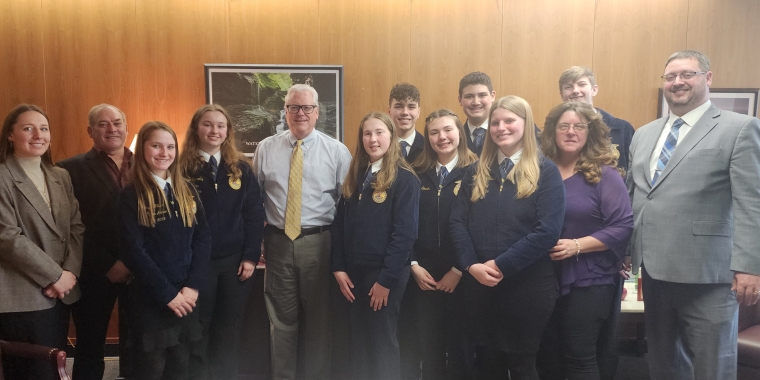O’Mara: Legislation recommended by Senate's Workforce Development Task Force signed into law ~ O’Mara points to CCC welding center in Elmira, new GST BOCES machinist training program as models for future efforts
September 16, 2016
-
COMMITTEE:
- Task Force on Workforce Development

Elmira, N.Y., September 16—State Senator Tom O’Mara (R,C-Big Flats), a member of the Senate Task Force on Workforce Development, today said that legislation advanced by the task force this year to enhance the state Department of Labor’s ability to assess New York’s future workforce needs has been signed into law by Governor Andrew Cuomo.
O’Mara was appointed a task force member upon its creation in 2015.
“One of the critical challenges in developing the highest quality workforce possible regionally and statewide is to be able to anticipate future workforce needs and, from that, identify the most effective job training education and workforce development programs to help fill those jobs,” said O’Mara. “This new law moves us forward in meeting this critical challenge.”
The legislation (S7967/A10578, Chapter 325) expands the type of data collected by the Labor Department to include forward-facing job statistics that can be used by employers and educators to accurately predict future needs and properly prepare the workforce for career opportunities.
Throughout the past year, at a series of public forums around the state, task force members received input from leaders in business, education, and state and local governments, as well as other workforce experts, to explore better processes to connect workers with regional employment needs. In May, the Task Force issued a report summarizing their findings and recommendations (see the full report attached above). O’Mara said that the task force report examines the state’s existing job training programs and seeks to develop new strategies to strengthen employee readiness in ways that better meet the needs of existing private-sector employers and potentially attract new ones.
In addition to the newly enacted law, the task force proposed a series of other actions which the Senate also approved. These measures include legislation to:
> invest $35 million to expand New York State’s Pathways in Technology Schools (P-TECHs) and Early College High Schools to meet student demand and enhance educational performance (S7921);
> help increase access to career and tech programs at BOCES (S7920);
> improve participation in apprenticeships by promoting coordination between high school guidance counselors and local building trades councils (S7915). In line with this legislation, O’Mara spearheaded a provision included in this year’s state budget to help the Manufacturers Association of Central New York (MACNY) rekindle and expand apprenticeship programs in advanced manufacturing. Apprentice training (along with other methods like vocational education) was once the tried-and-true way of preparing skilled trades workers. As this type of training fell out of favor, it led to a decline in the availability of this skilled workforce. Now, with the resurgence of advanced manufacturing in New York, MACNY plans to work with manufacturers, the state Labor Department and the State University system to recreate these much needed training programs in high demand areas like CNC machining, industrial maintenance, and electronics technicians;
> create the Help Individuals Reach Employment (HIRE) program to help students who have graduated from a SUNY or CUNY institution but cannot find full-time employment (S7646); and
> S7968A, enhances degree or certificate programs at community colleges in order to increase successful job placements for students (S7968).
While these additional actions did not receive Assembly approval, O’Mara said they will provide a foundation for future actions.
He also praised local programs like the Corning Community College (CCC) welding center in Elmira and the CNC Hybrid Machinist training program at GST BOCES, which graduated its first class this year, as models of how local schools and colleges can work together with local businesses and industries to develop the most effective, locally based job training and workforce development strategies.
“Initiatives like the CCC welding technology program and the new machinist training program at GST BOCES represent critical tools in the overall effort to make the Southern Tier economy more attractive to manufacturers, industries and other employers. They’re perfect examples, I believe, of the type of locally based workforce development models and investments that the Senate will seek to encourage, enhance and expand across the board,” O’Mara said.
Specific issues the task force will continue examine include: existing barriers and incentives for institutions and businesses to assist students and existing employees in acquiring new skills; state education policies that could maximize opportunities for high school and college students to obtain industry certifications and take career-themed courses for high-demand jobs; accessibility to information about regional and statewide workforce trends to ensure job training programs targeted to specific skills; job training resources available to unemployed and under-employed New Yorkers; and identifying opportunities for additional collaboration between the education and business sectors.



